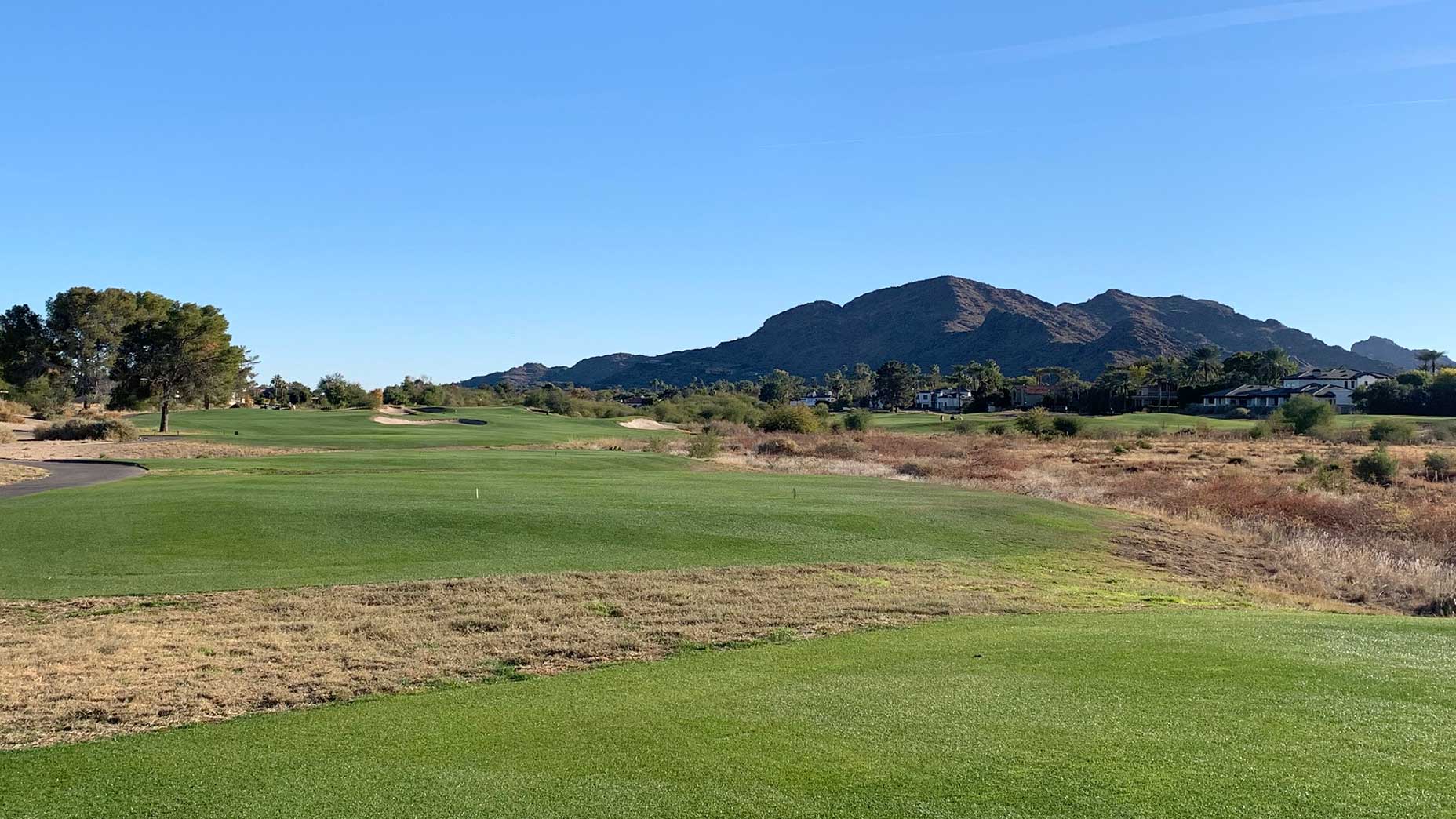How Camelback’s Ambiente Course became a Phoenix-area must-play
[ad_1]

Back in 2013, Camelback’s Ambiente Course received a facelift to improve playability and flood resiliency. Here’s why you need to visit it.
Courtesy
Welcome to WM Phoenix Open week, where even with a “cold” forecast it’s inevitable everyone stuck in the northern U.S. will get jealous of that glorious Phoenix weather and start dreaming of their next warm-weather retreat.
I was there in December — and I’m wishing I was still there now — for GOLF’s Top 100 Teachers Retreat. And like any savvy golf journalist on the road, I made sure to bring my clubs to sneak in a round after I landed. I’ve played public headliners like Troon North and We-Ko-Pa and Papago over the past few years, so this time I was looking for a new spot to explore. That’s when I reached out to GOLF’s resident Arizonian, Jessica Marksbury, for some insider knowledge.
“Have you played the Camelback courses?” she asked.
I had not.
“The Ambiente is very nice; I would go there first,” she said.

Courtesy Photo
So at about 10:30 on a crisp Sunday morning in December, I started the engine of my rental car and readied to leave the Phoenix airport. I plugged in “Camelback Golf Club” and began my trek 16 miles northeast. I had a tee time to catch — and this, I would soon find out, was one I’m glad I did.
Before we get into the Xs and Os here, there are a few important details you should know. Camelback is a part of the JW Marriott Scottsdale Camelback Inn Resort and Spa that’s just four miles down the road. There are two golf courses that are a part of the property: the Ambiente and the Padre. They are quite different, with the Padre acting as more of a classic parkland layout that sticks around the clubhouse, while the Ambiente goes straight out and back — think the Old Course routing — and is more like a links-golf experience, something that’s not easy to find in Phoenix. Most rankings prefer the Ambiente Course, but it’s all personal preference, and those two coupled together make for one heck of a 36-hole day.
But here’s what I learned in the days before I teed off: It wasn’t always like this here.

Josh Berhow
Back in 2013, the property’s three-decade-old Indian Bend course underwent a major $10 million renovation via Jason Stracka of Hurdzan/Fry Environmental Golf Design to improve both playability and flooding. Indian Bend was extremely flat, which meant it was harder to drain after big rains. Flat courses are also less fun, so there was plenty of work to do. About 365,000 cubic yards of material was removed from the water much of the course butts up against and used to raise parts of the layout, improving not only the fun factor but the ability to properly drain. They also removed trees and added more native/desert areas. Only 90 acres of the course is now considered maintained turfgrass, which also helps the maintenance team (not to mention saves millions of gallons of water annually). When it reopened it was renamed Ambiente, which means “environment” in Spanish.
And unless you were here about 10 years ago, you’d never know any of this happened. The slopes and mounds and bumps you’ll find on fairways or around greens look as if they’ve been there forever, and while a lot of it is subtle, it’s still enough to affect your golf ball and your game plan.

Josh Berhow
The fairways are mostly wide and forgiving (though a right miss is deadly on the holes where water lurks). Most of the trouble is up around the greens, but you’ll be in good shape if you identify the proper spots to miss. The majority of the greens have bail-out areas where you’ll be left with a harmless up and down if you miss the putting surface, but the majority of the greens also have a diabolical bunker or two that you absolutely do not want to find.
As frustrating as some might be to hit out of, those bunkers, with their linksy, rugged look around the edges, are important. With wide fairways and rolling terrain that allows you to hit some monster drives, those deep, tall-faced traps are the perfect defense to punish squirrelly approach shots. So are the handful of strategically placed bunkers some 30 to 50 yards in front of greens, which, at first glance, make you feel like they might come into play (just as they are supposed to).

Josh Berhow
As for notable holes, let’s start from the beginning. You’ll love the par-5 3rd, where a mostly open green will allow you to swing hard and try to get there in two. Or the short par-4 5th, where you absolutely can’t miss right but a big drive can get you down near the green, which is surrounded by bunkers left, back and right. Ten is another short par-4 that doglegs to the left — just make sure to execute your wedge in and don’t blade it like I did.
The par-3 15th boasts an awesome two-tiered green, where — unless there’s a group waiting behind you! — you should definitely hit putts from one level to the other, just to see its brilliance.
I played well on the Ambiente Course — OK, I was playing well, until a triple-double-bogey finish led to an 85 and ruined a dream chance of shooting in the 70s — but as an objective arbiter it’s important I don’t let a late-round combustion affect my opinion of a course. So, what’s the verdict? Camelback Ambiente is a must-play for anyone visiting the Phoenix area. Its linksy layout is different than your typical Scottsdale experience. It’s forgiving — so the high-handicappers in your group will appreciate it — but without precision off some tees and into many greens it’s going to bite back. Just know the course you see isn’t what was there a decade ago. It’s much better now, and a stop you shouldn’t pass up.


















